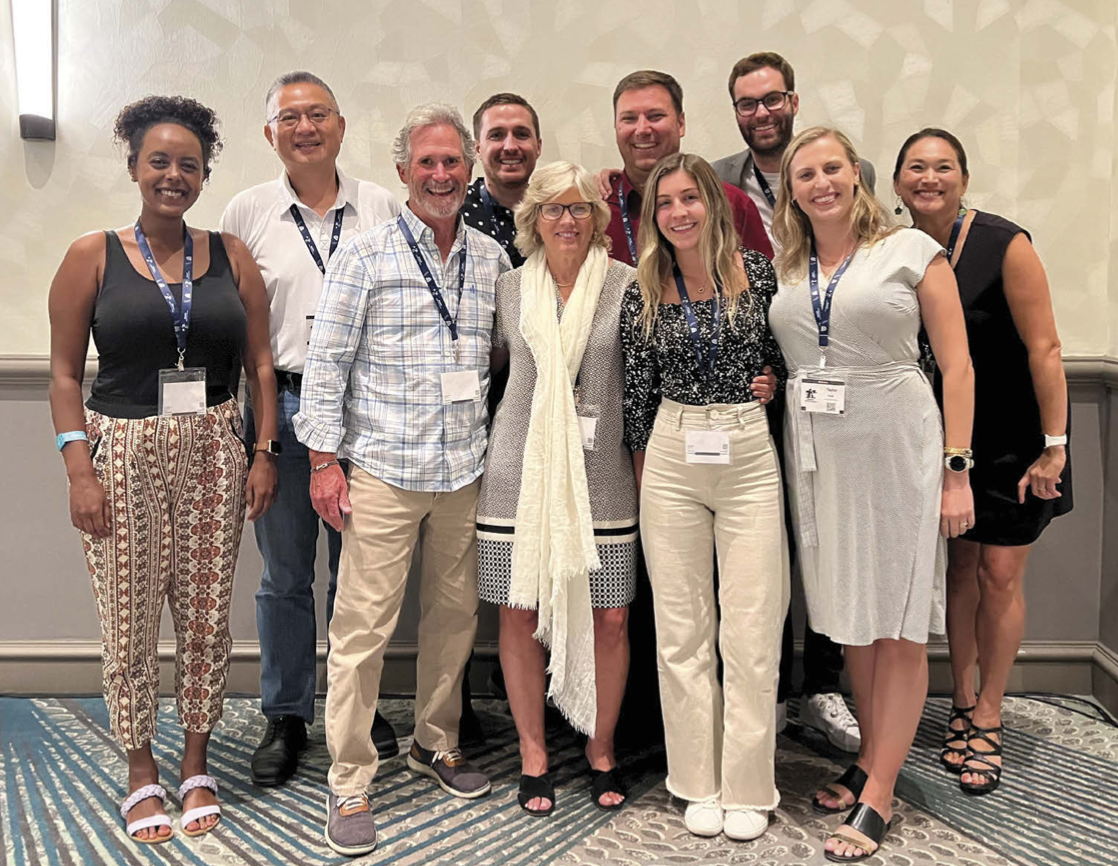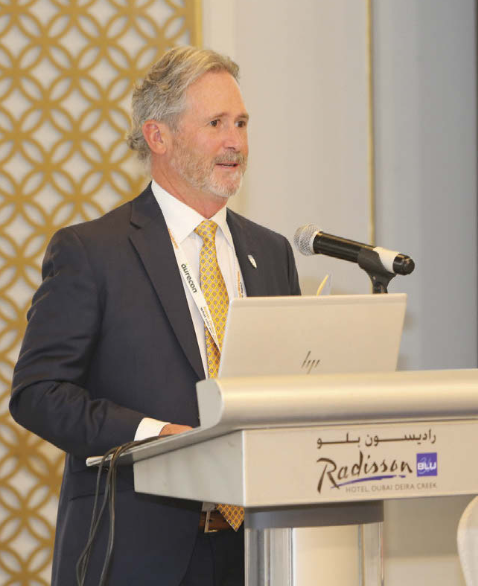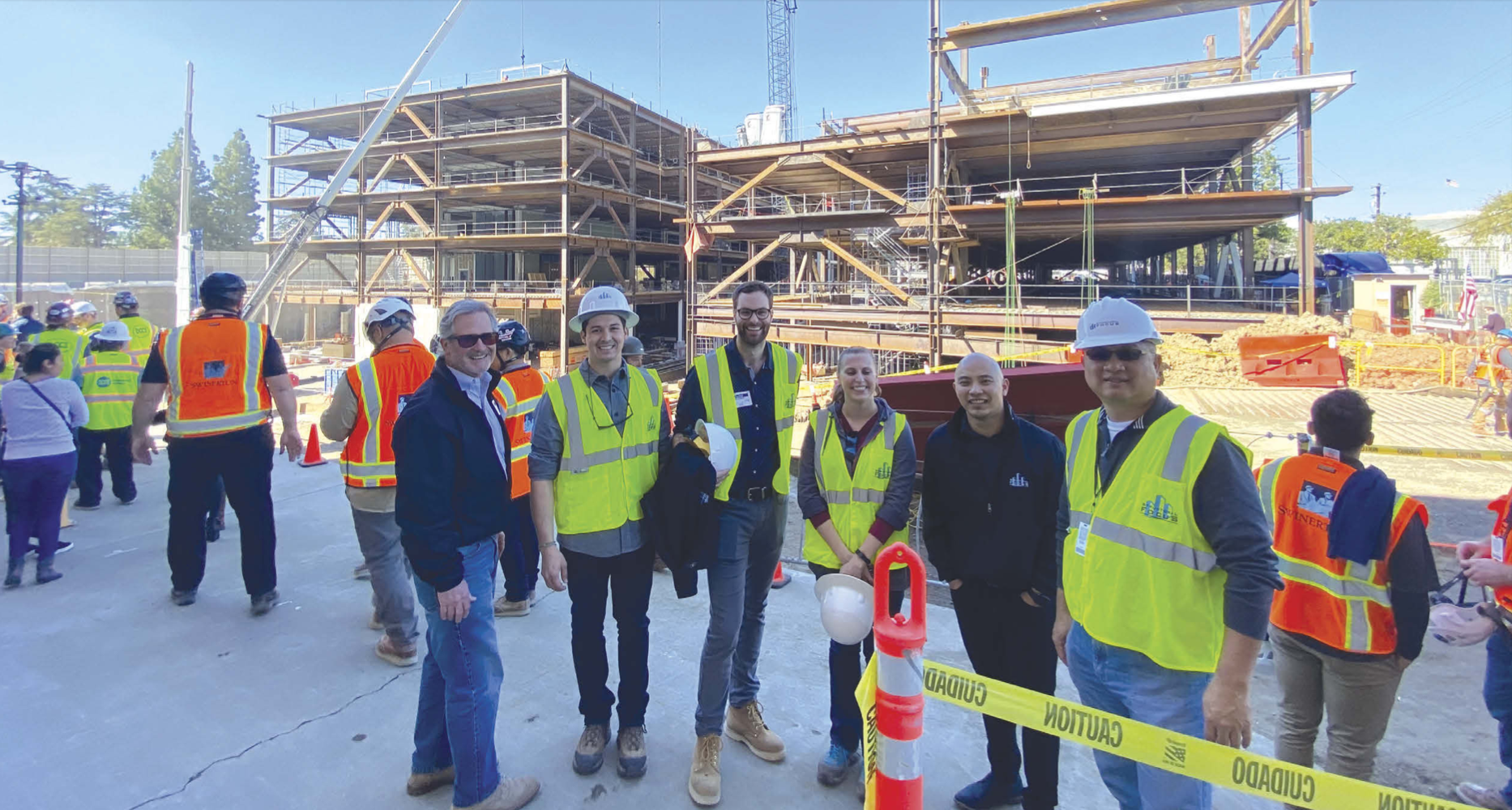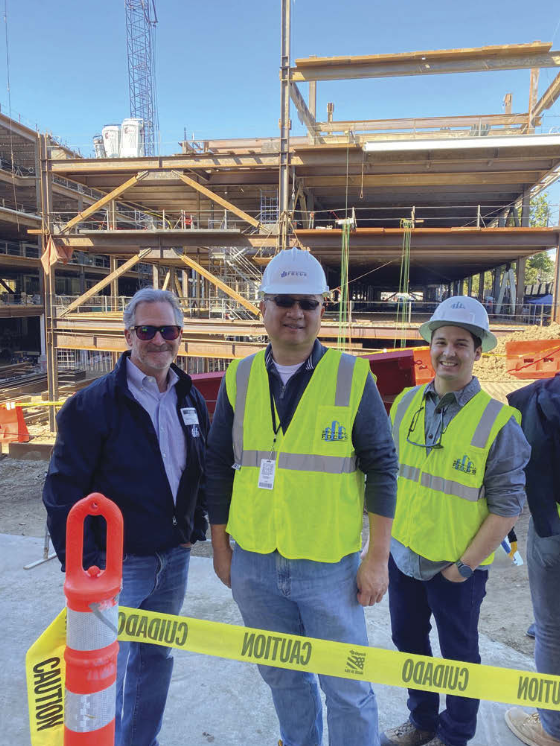David Cocke started Structural Focus over twenty years ago in Los Angeles and has grown the firm to nearly 30 employees. David received his B.S. from Virginia Tech and his M.S. from San Jose State University. He is a registered Structural Engineer in California and several other states, with expertise in seismic evaluations and retrofits, historic preservation, and new design.
David was the 2019 President of the Structural Engineers Institute (SEI) of ASCE and is the current President of the Earthquake Engineering Research Institute (EERI). In addition, David has served on the Board of Directors of numerous organizations, including the California Preservation Foundation, Pasadena Heritage, USC Architectural Guild, SEAONC, SEAOSC, SEAOC, and the Board of Los Angeles Conservancy. In 2007, David served as the SEAOC-appointed Alternate Structural Engineer Member on the California Historical Building Safety Board. In 2014, David was named to Los Angeles Mayor Eric Garcetti’s Mayoral Seismic Safety Task Force to perform a year-long study of seismic risk in Los Angeles, resulting in the Mayor’s Resilience by Design report.

David has led the effort to bring post-earthquake building re-occupancy programs to southern California. In 2013, his team worked with DreamWorks to establish southern California’s first such program in the City of Glendale. Now the team is partnering with a multitude of clients and cities throughout Southern California to establish their programs.
We know that Structural Focus is a fairly prominent firm in southern California, but for those outside the region, what could you tell us about your company?
We founded Structural Focus in April 2001, after I moved here in 1995 to open Degenkolb Engineers’ LA office. We wanted to focus on the projects that we enjoyed most: preservation, adaptive reuse, media and film studios, and universities and labs, and today, we are pretty well known in those markets. We have been growing gradually and consistently and now have a staff of over 25. Our strategy has been to find and keep repeat clients, and we have been especially successful with “campus” environments. I think we have a reputation for excellent design, complete documents, and constructability. We have very loyal clients, and most of our work is with Fortune 500 owners. We have not spread out to multiple offices but will work anywhere the client wants us. We are licensed in over 20 states.
On a personal level, that is quite an accomplishment, particularly in a competitive marketplace. So what is your secret, if we might ask?
Starting and growing Structural Focus has been personally very gratifying for me, and most gratifying is finding really great people and giving them the environment where they can succeed. We try to be pretty picky about our projects and look at a project through the client’s eyes to become their trusted advisor.
Recruiting and retaining talented staff is challenging, particularly since Covid. How have you done it for the long-term and also recently when so many firms struggled?
Again, it’s all about finding high-quality people and taking care of them. We recruit from the best university programs in the country. We have been very successful in hiring summer interns and then having them return after their graduate program. We have an excellent benefits package, but I think it’s about treating our people respectfully and actively supporting their career advancement. We encourage continuing education and professional activities. We want to show them that this profession has a lot to offer and that they can advance their career with some investment by us and themselves. We have a very diverse team, and we try hard to celebrate both professional and personal milestones. We have been named one of the top Best Places to Work in Los Angeles for several years in a row.
For structural engineers thinking about going out on their own, would you provide a few do’s and don’ts that might benefit them?
Write a strategic plan and identify the markets that you want to be in. Make sure you have enough cash to cover the first months or so before invoices start getting paid. Do not try to grow too quickly. Don’t be afraid to reach out to your connections; never stop expanding your network. Take care of your clients, be loyal and make them look good. When they move, stay in touch with them. Finally, do not be afraid to hire people that are smarter than you!
Of all the projects you have worked on, would you describe the one or two that you are most proud of and why?
That’s a difficult question after 41 years of work in this profession! Maybe the Hotel Del Coronado in San Diego because of the complexity of working on, at that time, an almost 120-year-old building with lots of past modifications and little documentation. Maybe the Wilshire Boulevard Temple because of its beauty and our excellent design and construction team. Or maybe the dozens of Warner Bros. projects we worked on since the 1994 Northridge Earthquake. But, I must say that I am also very proud of our efforts to establish accelerated post-earthquake building re-occupancy programs in southern California. We have multiple very large campus clients and are working hard on spreading the word, including my serving as project technical director on a FEMA-funded Applied Technology Council project to publish program guidelines.
Successful firms plan for ownership transition and firm longevity. Without giving away any secrets, what is your philosophy on the subject?
Since we started in 2001, we have always thought we wanted to start a legacy firm. So we planned for an internal ownership transition from the beginning. It might look slightly different from what we initially envisioned, but we are getting there. Of course, along the way, we always said with a wink, “if someone makes us a crazy offer, we’ll talk.”
Firms are looking to have talented staff who reflect the communities they work in. What attributes do you look for?
We like to hire people with a great attitude, good communication skills, a sense of humor, and the drive to be a leader. So when we see great leadership positions on a resume, regardless of what the person did, that interests us more than the grades, assuming they have taken all the appropriate courses.

You have demonstrated a long and dedicated commitment to professional activities. You are a Fellow of SEI, ASCE, and SEAOC. What is the most rewarding aspect of your service, and if we may ask, was it worth it and why?
Again, I am very gratified by having the opportunity to give back to our profession and our communities. My wife Kate and I have served on numerous boards over the years, both in our professions and community. My professional activities started small at the local level, and over the years, I have held national and international leadership positions. Those activities also allowed us to meet some outstanding people from all around the world. I definitely think it was worth the investment. I am driven to help our younger engineers have a rewarding career, so if there is something that I can do in professional activities that help them or Structural Focus, then I am motivated.

You mentioned your non-engineering community involvement. Would you expand on that?
Great question. Let me start with a story. I was on a local organization’s board and was asked to help on a project. After digging into the issue using skills I have learned from my profession and coming up with a solution, the board president stated at a board meeting, “Wow, we should ALWAYS try to have an engineer on our board!” The point is that we as engineers have a unique skill set to help our communities, even if not in a highly technical manner, by using our analytical and communication
skills that we use every day at work. We have a lot to give, and our communities can use our help. For example, I often lecture to engineering students that we can “save the world.” In addition, I have found that it is very fulfilling personally!
Work-life balance has been a hot topic for several years. Recently doing just enough to get by seems to be a trend too. What advice would you give to young engineers?
Funny, I never thought about “just getting by” until you asked this question, but it reminds me that I had a similar attitude my first couple years at work. Finally, my wife Kate sat me down, pointed out that I had been a high achiever in the past, and questioned why I would “settle” now. I’ve given the same talk to several engineers on my staff that needed it after a year or two in the professional world. At Structural Focus, we do believe that we can work hard and play hard. We want people to go on vacations, and we seek adventures. And we also strive to show that we want them to be a real success!
We all have mentors and people who have helped us be successful. So whom would you like to thank and why?
Wow, over 41 years, I have had many mentors. Obviously, my former bosses and friends at Degenkolb. I was there for 20 years and learned a lot. That was a special group! Since then, I have learned from friends, clients, and others in professional associations and my younger staff. Finally, of course, I must mention my wife, Kate – she has been my best advisor, business partner, and supporter.

In closing, you have mentioned Kate a few times. There must be a lot to unpack, but she obviously played an essential role in your success and that of your team. What does that say about what makes Structural Focus a special place?
When I told Kate back in 2001 that I was going to start a new firm, she enthusiastically volunteered to be a part of it (after leaving a 20-year technical career at Bechtel)! She took on all the duties that did not involve structural engineering or business development. Her presence over the years has had a stabilizing effect on our staff, and she has been a prominent role model for so many of our diverse young staff. (Don’t ask any of our staff who is REALLY in charge!) I do think that our partnership has been a tremendous influence on the Structural Focus culture of teamwork. We would not be the same firm without her!■
